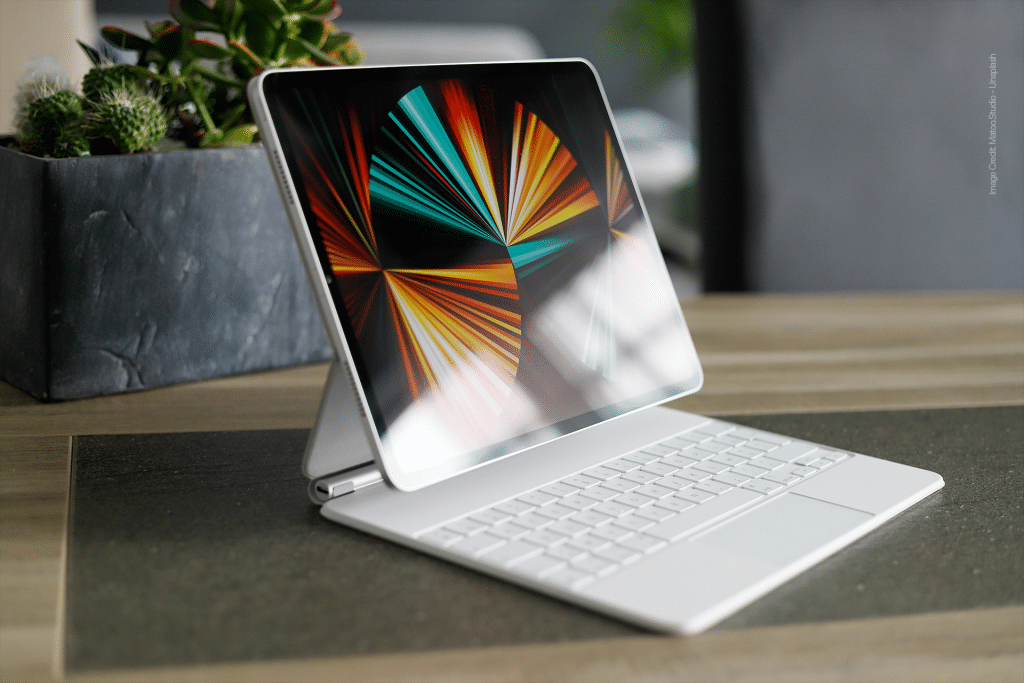Connecting a Image Credit: Matoo.Studio – Unsplash or trackpad to your iPad is straightforward, provided you’re running iPadOS 13.4 or later, supported by most modern iPad models, including iPad Pro, iPad Air, and iPad Mini. Start by ensuring your accessory—whether it’s an Apple Magic Mouse, Magic Trackpad, or a third-party Bluetooth device—is in pairing mode. For Apple’s accessories, this typically happens automatically when powered on, while third-party devices may require pressing a specific button (check the manufacturer’s instructions).
Open the Settings app on your iPad and tap Bluetooth. Ensure Bluetooth is enabled (the toggle should be green). Your mouse or trackpad will appear under “Other Devices.” Tap its name to pair, following any onscreen prompts, such as entering a code (for Apple devices, try 0000 if prompted). Once connected, the device appears under “My Devices” and automatically reconnects when in range, as long as Bluetooth remains active. Be mindful that using multiple Bluetooth accessories may cause Wi-Fi or Bluetooth interference on some iPad models, so disconnect unused devices if you notice performance issues.
Navigating with a Pointer
Once paired, a circular pointer appears on your iPad’s screen, mimicking the feel of a desktop cursor. Move the mouse or swipe the trackpad to navigate, just as you would on a laptop. The pointer adapts to onscreen elements, transforming into an I-beam for text selection or highlighting buttons and icons with subtle animations, such as app icons enlarging on the Home Screen. This dynamic behavior makes navigation intuitive, bridging the gap between touch and pointer-based interaction.
The pointer disappears after a few seconds of inactivity to keep the screen uncluttered, reappearing with a slight movement. For multitasking, move the cursor to the bottom of the screen to reveal the Dock or click the white bar to return to the Home Screen. Trackpad users can leverage gestures, like a three-finger swipe to switch apps or a two-finger scroll, though older devices like the first-generation Magic Mouse or Trackpad don’t support scrolling or gestures.
Customizing Mouse Settings
Tailoring your mouse experience is simple through the Settings app. Navigate to Settings > General > Trackpad & Mouse to adjust key options. The Tracking Speed slider controls how quickly the pointer moves—slide it left for precision or right for speed. Natural Scrolling, when enabled, aligns content movement with your finger’s direction, mimicking touchscreen scrolling. You can also set a secondary click, equivalent to a right-click on a Mac or a long press on the iPad, by choosing whether the left or right mouse button triggers it. This opens contextual menus, such as app options when clicking an icon.
For deeper customization, go to Settings > Accessibility > Pointer Control. Here, you can enhance visibility by increasing contrast, making the pointer darker and less transparent. Adjust the Pointer Size slider for a larger or smaller cursor, or change its color for better visibility. The Automatically Hide Pointer option lets you set how long the pointer remains visible when idle, and you can disable Pointer Animations if the shape-shifting cursor feels distracting. Scrolling Speed adjusts how fast pages move when using a mouse wheel or trackpad gestures.
Trackpad-Specific Features
Trackpads offer additional functionality, especially for users accustomed to Mac-like gestures. In Settings > General > Trackpad, you can enable Tap to Click, allowing a light tap to register as a click, or Two-Finger Secondary Click for quick access to contextual menus. These settings make trackpads particularly efficient for tasks like editing or navigating complex apps. For example, a three-finger swipe up opens the App Switcher, while a two-finger swipe scrolls through webpages or documents. Apple’s Magic Trackpad and trackpad-equipped cases, like the Magic Keyboard for iPad, connect seamlessly via Bluetooth or the Smart Connector, requiring no manual pairing.
If you use a trackpad case like the Logitech Folio Touch or Brydge Pro+, the setup is even simpler, as these connect automatically through the iPad’s Smart Connector. Such accessories combine a keyboard and trackpad, turning your iPad into a compact workstation, especially when paired with a stand.
Universal Control: Seamless Integration with Mac
For users with a Mac running macOS 12.3 or later, Universal Control elevates the mouse and trackpad experience. This feature lets you use a single mouse, trackpad, or keyboard across your Mac and iPad, provided both devices are signed into the same Apple Account with Wi-Fi, Bluetooth, and Handoff enabled. To activate, move your Mac’s pointer to the screen edge closest to your iPad until a border appears, then push through to the iPad’s screen, where it becomes a circular pointer. You can drag files between devices, type in iPad apps using your Mac’s keyboard, or click iPad icons with your Mac’s mouse.
Universal Control is ideal for hybrid workflows, such as editing a document on your iPad while referencing files on your Mac. To adjust device positioning, go to System Settings > Displays on your Mac and arrange the iPad’s thumbnail relative to your Mac’s screen. If connectivity issues arise, ensure devices are within 30 feet and not sharing a Personal Hotspot.
Enhancing Productivity
Adding a mouse or trackpad transforms the iPad into a powerful productivity tool, especially for tasks requiring precision, like spreadsheet editing or graphic design. The ability to customize pointer behavior and gestures ensures the experience suits your needs, whether you’re a casual user or a professional. For accessibility, features like AssistiveTouch (Settings > Accessibility > Touch) allow further button customization, making the iPad more inclusive for users with motor challenges.
As iPadOS continues to evolve, mouse and trackpad support brings the device closer to laptop functionality without sacrificing its touch-based roots. Whether you’re using a third-party mouse, Apple’s Magic Trackpad, or a keyboard-trackpad combo, these accessories make the iPad a more versatile companion for work and creativity.
